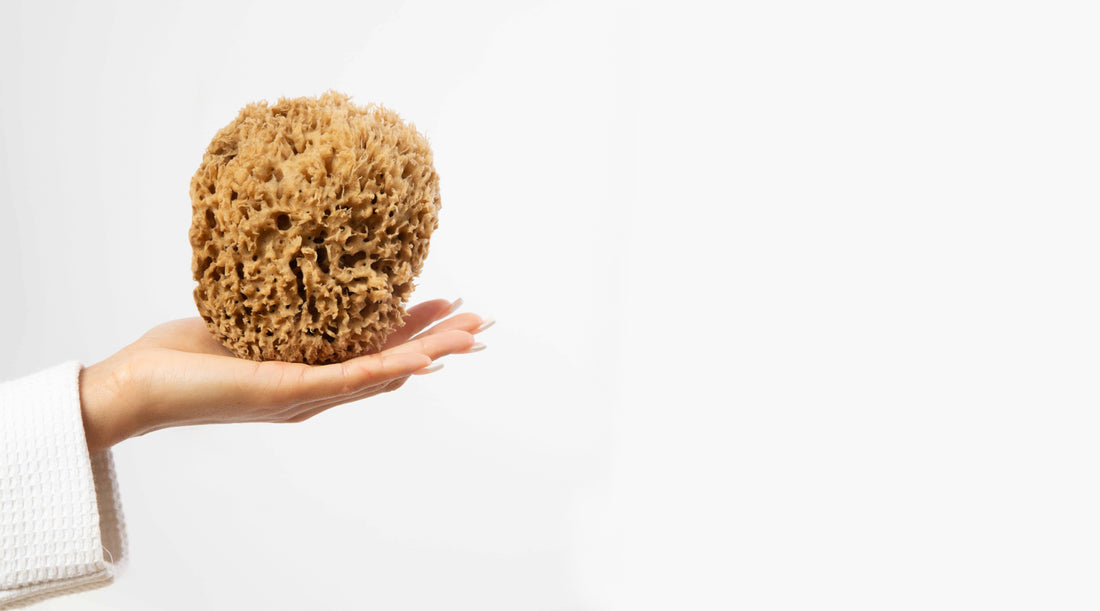There are many alternatives to natural sponges, including sponges made from plastic, loofah, and even wood pulp. But the real question is ‘are there any better alternatives to a natural sponge?’
Of course, we may be a little biased as we produce the best sponges for bathing from natural sea sponge, but we truly think that nothing can beat them. Plastic is low quality, loofah is too rough, and wood pulp just doesn’t last long at all.
Let’s look at sponge alternatives in more detail.
Best sponges for bathing
When comparing natural sponge alternative options, you will typically come across loofahs, plastic sponges, wood pulp sponges, and sea sponges.
Natural loofah sponge
A loofah sponge is made from the dried fibrous skeleton of a cucumber-like vegetable. These products are natural and can be produced in a sustainable way. You can find loofah sponges widely available and if you live in the right climate zone, you may even be able to grow the plant at home and produce your own loofahs.
But it’s worth noting that even the best natural loofah sponge is not suitable for skincare. While a loofah sponge is the perfect rough texture for cleaning dishes and household surfaces, it is far too abrasive for your skin. There is such a thing as over exfoliation!
Plastic mesh sponge
Next, you may be tempted by a plastic mesh sponge. Obviously, they are the least eco-friendly option, but the low cost of these sponges makes them very attractive. As we explored in our article Why Are Natural Sponges So Expensive?, the long-term cost is higher than you would expect.
This is because plastic sponges cannot be effectively cleaned, so they quickly become traps for bacteria and dead skin cells. It’s very unhygienic to use a plastic sponge for more than a few weeks. This is not a good natural sponge alternative.
Cellulose (wood pulp) sponge
Cellulose sponges are most commonly made for household cleaning, but some are also produced for the skincare industry. Made from cellulose which can be extracted from plant matter or wood pulp, these sponges are quite dense and can hold onto quite a lot of water.
The benefits of this sponge are that it is uniform in shape. But without the intricate channel network that a natural sea sponge (read below) has, they can be very hard to sterilize between uses and fall apart quickly. Also they lack the natural fiber surface that sea sponges have.
Natural sea sponge
A natural sea sponge is made from a naturally occurring material grown organically in the sea. Sea sponges are hand-harvested, cleaned, dried, and cut in a time-honored traditional method. They naturally have very unique natural fibers and an intricate structure of tiny channels that makes them superior to alternatives.
No manmade or natural alternative to a sea sponge can provide the same level of absorption, rich lather, and cleansing benefits for all skin types. The exfoliation of a natural sea sponge remains the best clogged pore remover even for sensitive skin.
Long-lasting natural sponges are a true asset to any skincare routine with unique qualities that cannot be replicated synthetically. Sea sponges even come in different varieties with different properties, from massaging to soothing to exfoliating. Explore natural sponges at Naroa to learn more.
